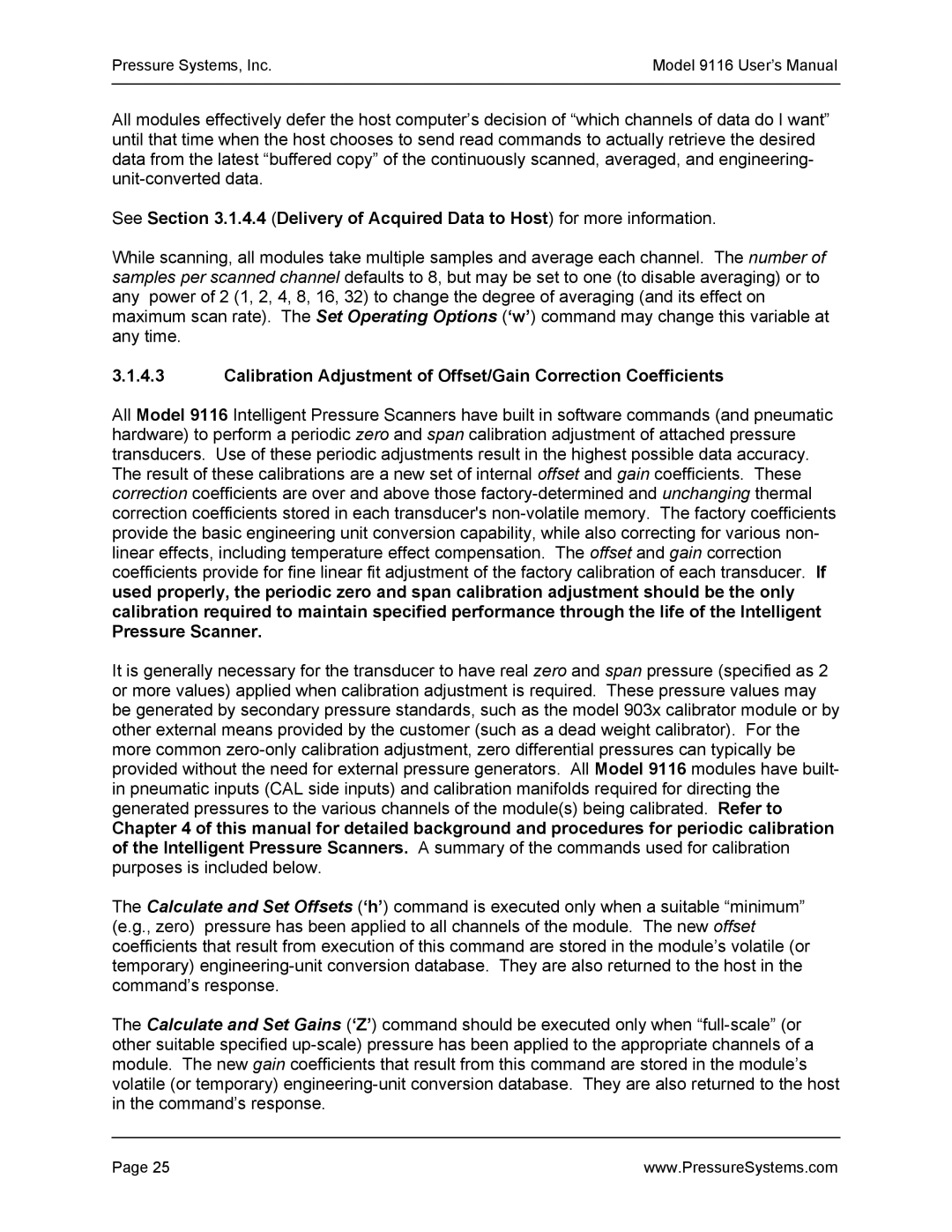Pressure Systems, Inc. | Model 9116 User’s Manual |
|
|
All modules effectively defer the host computer’s decision of “which channels of data do I want” until that time when the host chooses to send read commands to actually retrieve the desired data from the latest “buffered copy” of the continuously scanned, averaged, and engineering-
See Section 3.1.4.4 (Delivery of Acquired Data to Host) for more information.
While scanning, all modules take multiple samples and average each channel. The number of samples per scanned channel defaults to 8, but may be set to one (to disable averaging) or to any power of 2 (1, 2, 4, 8, 16, 32) to change the degree of averaging (and its effect on maximum scan rate). The Set Operating Options (‘w’) command may change this variable at any time.
3.1.4.3Calibration Adjustment of Offset/Gain Correction Coefficients
All Model 9116 Intelligent Pressure Scanners have built in software commands (and pneumatic hardware) to perform a periodic zero and span calibration adjustment of attached pressure transducers. Use of these periodic adjustments result in the highest possible data accuracy. The result of these calibrations are a new set of internal offset and gain coefficients. These correction coefficients are over and above those
used properly, the periodic zero and span calibration adjustment should be the only calibration required to maintain specified performance through the life of the Intelligent Pressure Scanner.
It is generally necessary for the transducer to have real zero and span pressure (specified as 2 or more values) applied when calibration adjustment is required. These pressure values may be generated by secondary pressure standards, such as the model 903x calibrator module or by other external means provided by the customer (such as a dead weight calibrator). For the more common
Chapter 4 of this manual for detailed background and procedures for periodic calibration of the Intelligent Pressure Scanners. A summary of the commands used for calibration purposes is included below.
The Calculate and Set Offsets (‘h’) command is executed only when a suitable “minimum” (e.g., zero) pressure has been applied to all channels of the module. The new offset coefficients that result from execution of this command are stored in the module’s volatile (or temporary)
The Calculate and Set Gains (‘Z’) command should be executed only when
Page 25 | www.PressureSystems.com |
